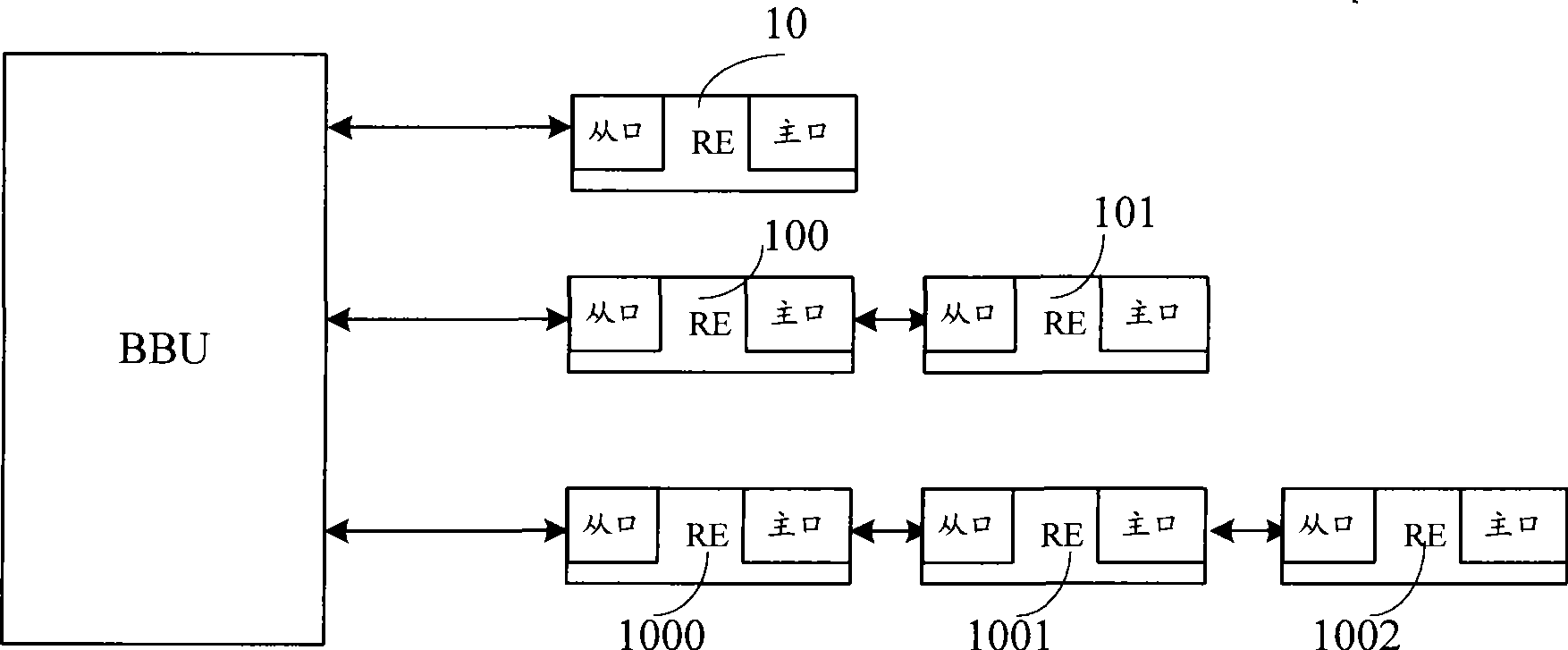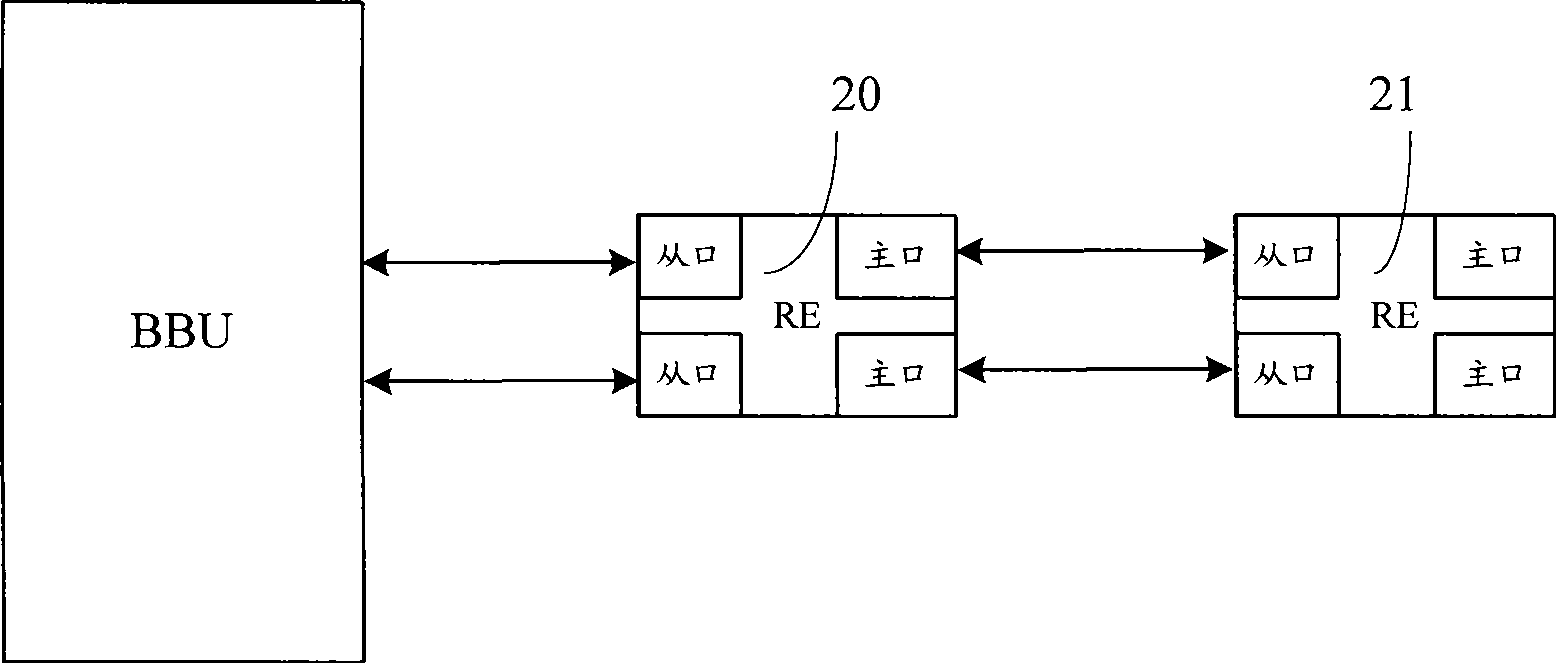Self-adapting method and apparatus for far-end equipment transmission rate
A remote device and transmission rate technology, applied in the field of communication, can solve problems affecting normal data transmission and reception, inflexible solutions, etc., and achieve reliable operation and easy implementation
- Summary
- Abstract
- Description
- Claims
- Application Information
AI Technical Summary
Problems solved by technology
Method used
Image
Examples
Embodiment Construction
[0025] The core of the present invention is that the slave device requests the master device to reduce or increase the sending rate by comparing the master device rate with its own rate maximum threshold according to the master device's sending rate. Among them, the master device is BBU or RE, and the slave device is the next-level RE of the master device. For example, if the master device is a BBU, then the slave device is the first-level RE, and if the master device is the first-level RE, then the slave device is a second level RE, and so on. by figure 1 Taking the third group of REs as an example, BBU and RE1000, RE1000 and RE1001, RE1001 and RE1002 are three groups of master devices and slave devices respectively.
[0026] see Figure 4 , is a flow chart of the method of the present invention, including:
[0027] Step 401: The slave device receives data from the master device, and obtains the current rate of the master device;
[0028] Step 402: The slave device compar...
PUM
 Login to View More
Login to View More Abstract
Description
Claims
Application Information
 Login to View More
Login to View More - R&D
- Intellectual Property
- Life Sciences
- Materials
- Tech Scout
- Unparalleled Data Quality
- Higher Quality Content
- 60% Fewer Hallucinations
Browse by: Latest US Patents, China's latest patents, Technical Efficacy Thesaurus, Application Domain, Technology Topic, Popular Technical Reports.
© 2025 PatSnap. All rights reserved.Legal|Privacy policy|Modern Slavery Act Transparency Statement|Sitemap|About US| Contact US: help@patsnap.com



